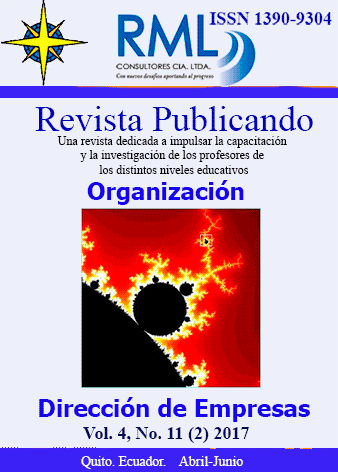Abstract
Los ciclos de negocios pueden afectar a mercados enteros y alterar significativamente las actividades de marketing y el desempeño de muchas empresas. A pesar de que los gerentes no pueden evitar que ocurran CN, la investigación de mercadeo en los últimos 15 años ha proporcionado evidencia creciente de que su impacto en los consumidores y, por lo tanto, en el desempeño de la firma y la marca, depende en gran medida de cómo las firmas ajustan su mezcla de marketing en respuesta a estas oscilaciones macroeconómicas. En este estudio, revisamos la creciente literatura de marketing sobre el impacto de las fluctuaciones CN. La discusión se centra en tres aspectos clave: Impacto temporal o permanente de los CN en la comercialización. Enfoques para evaluar el estado general de la economía en un mercado. Métodos y métricas para describir los patrones CN en marketing.
References
Decorte, N., Lafaix, P., Millet, G., Wuyam, B., & Verges, S. (2012). Central and peripheral fatigue kinetics during exhaustive constant”load cycling. Scandinavian journal of medicine & science in sports, 22(3), 381-391.
Dekimpe, M. G., & Deleersnyder, B. (2017). Business cycle research in marketing: a review and research agenda. Journal of the Academy of Marketing Science, 1-28.
Demay, C., Liens, B., Burguií¨re, T., Hill, V., Couvin, D., Millet, J., . . . Rastogi, N. (2012). SITVITWEB–a publicly available international multimarker database for studying Mycobacterium tuberculosis genetic diversity and molecular epidemiology. Infection, Genetics and Evolution, 12(4), 755-766.
Du, R. Y., & Kamakura, W. A. (2012). Quantitative trendspotting. Journal of Marketing Research, 49(4), 514-536.
Hellwig, M. F. (2009). Systemic risk in the financial sector: An analysis of the subprime-mortgage financial crisis. De economist, 157(2), 129-207.
King, C., & LaBlaine, B. (2009). Dynamic dispenser: Google Patents.
Kydland, F. E., & Prescott, E. C. (1990). Business cycles: Real facts and a monetary myth. Real business cycles: a reader, 383.
Lamey, L., Deleersnyder, B., Dekimpe, M. G., & Steenkamp, J.-B. E. (2007). How business cycles contribute to private-label success: Evidence from the United States and Europe. Journal of Marketing, 71(1), 1-15.
Shen, Z., Subbiah, S., Gu, X., & Wilkes, J. (2011). Cloudscale: elastic resource scaling for multi-tenant cloud systems. Paper presented at the Proceedings of the 2nd ACM Symposium on Cloud Computing.
Stock, J. H., & Watson, M. W. (1999). Forecasting inflation. Journal of Monetary Economics, 44(2), 293-335.
Unit, E. I. (2009). E-readiness rankings 2009: The usage imperative. The Economist. A report from the Economist Intelligence Unit written in cooperation with the IBM Institute for Business Value.
You are free to:
Share — copy and redistribute the material in any medium or format.
Adapt — remix, transform, and build upon the material.
The licensor cannot revoke these freedoms as long as you follow the license terms.
Under the following terms:
Attribution — You must give appropriate credit, provide a link to the license, and indicate if changes were made. You may do so in any reasonable manner, but not in any way that suggests the licensor endorses you or your use.
NonCommercial — You may not use the material for commercial purposes.
ShareAlike — If you remix, transform, or build upon the material, you must distribute your contributions under the same license as the original.
No additional restrictions — You may not apply legal terms or technological measures that legally restrict others from doing anything the license permits.
